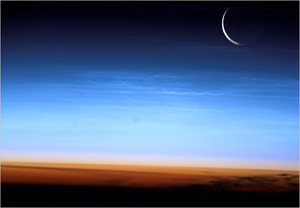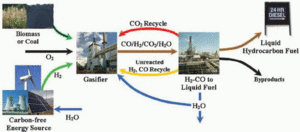Two hundred seventy thousand feet above the ground, higher than 99.9 percent of the earth's air, clouds still float around - thin, iridescent wisps of electric blue.
NASA is launching a small satellite to take a closer look at these clouds at the edge of outer space and to try to understand why, in recent years, they are appearing more often over more parts of the world. They are also becoming brighter.

|
| ©Ed Lu/NASA
|
| Noctilucent clouds are more easily seen from space as this photograph from the International Space Station shows. Since 1980, satellite observations show the number of noctilucent clouds increasing about 28 percent per decade. The ice crystals in the clouds also appear to be getting bigger, with the brightness of the clouds rising about 7 percent per decade.
|

Comment: The old adage, "If it sounds to good to be true, then it probably isn't" should be applied here. Converting biomass to fuel would in effect, mean the death of millions from starvation so that the rich can still maintain their luxurious lifestyle.